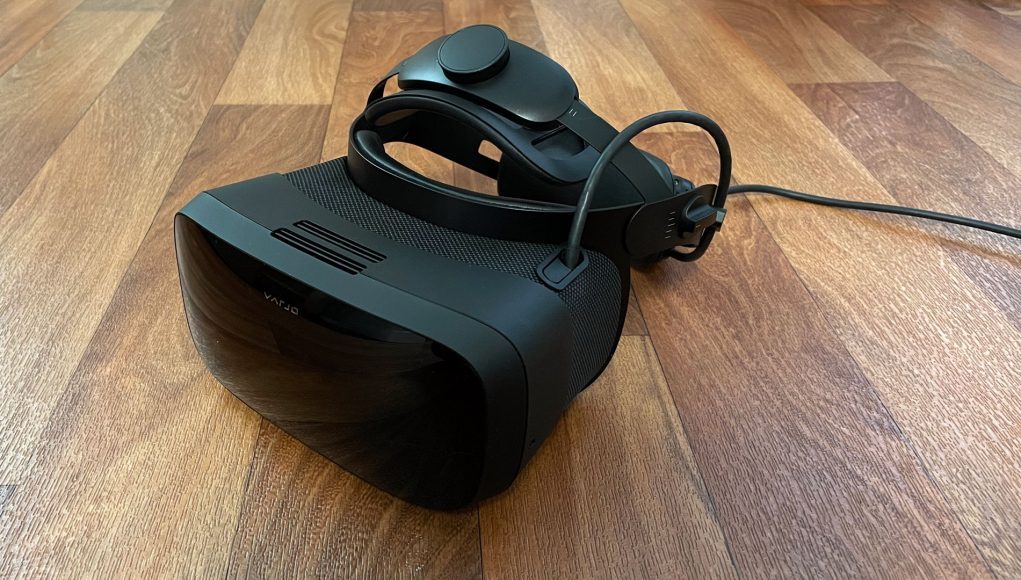Varjo today announced Aero; while it’s the company’s most affordable headset yet, its $2,000 price point still limits its to businesses and wealthy enthusiasts. But with stunning clarity its sure going to be a dream headset for VR simmers who aren’t afraid to trade cash for immersion.
Varjo Aero is a pared down version of the company’s high-end enterprise headsets, notably without the ‘bionic display’ which gave the headset retina resolution at the center of the field-of-view. Even without the novel bionic display, Aero still offers stunning clarity (claimed to be 35 PPD) that’s beaten only by the company’s more expensive headsets. You can read up on the Aero’s announcement and release date here; let’s start with the full specs below:
Varjo Aero Specs |
|
| Resolution | 2,880 x 2,720 (7.8MP) per-eye, mini-LED LCD (2x) |
| Refresh Rate | 90Hz |
| Lenses | Aspheric |
| Field-of-view (claimed) | 134° diagonal, 115° horizontal (at 12mm eye-relief) |
| Optical Adjustments | IPD (automatic motor driven) |
| IPD Adjustment Range | 57–73mm |
| Connectors | USB-C → breakout box (USB-A 3.0, DisplayPort 1.4) |
| Cable Length | 5m |
| Tracking | SteamVR Tracking 1.0 or 2.0 (external beacons) |
| On-board cameras | 2x eye-tracking |
| Input | None included (supports SteamVR controllers) |
| Audio | 3.5mm aux port |
| Microphone | None (supports external mic through aux port) |
| Pass-through view | No |
| Weight | 487g + 230g headstrap with counterweight |
Varjo Aero Review
Before we dive in too deep, let’s take a look at where the Varjo Aero fits into the landscape of similar headsets from a price standpoint:
| Varjo Aero | Vive Pro 2 | Reverb G2 | Valve Index | |
| Headset Only | $2,000 | $800 | – | $500 |
| Full Kit | $2,580 | $1,400 | $600 | $1,000 |
| * includes MSRP of Index controllers and 2x SteamVR Tracking base stations | ||||
To date Varjo’s headsets have been best known for their ‘bionic display’ system, which actually uses two displays per-eye, a large display to cover a wide field-of-view, and a smaller inset display with high pixel density which offers genuine retina resolution (60+ PPD) in the center of the headset’s field-of-view.
Varjo Aero does away with the smaller display and looses its true retina resolution, but even with just its large display it still retains a whopping 35 PPD and leading clarity over all non-Varjo headsets on the market.
Clarity
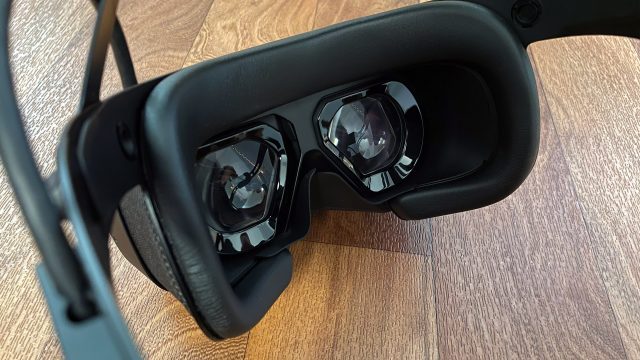
It wasn’t long ago that we saw the release of Vive Pro 2 and Reverb G2, with resolutions of 2,448 x 2,448 (6MP) and 2,160 × 2,160 (4.7MP), both of which have pretty impressive clarity.
And though Varjo Aero’s 2,880 x 2,720 (7.8MP) resolution doesn’t seem like that much more, it gets an extra clarity boost thanks to its aspheric lenses which all but eliminate glare and god-rays which are prevalent in other headsets.
With the right content, looking through the lenses of Varjo Aero feels like looking at the world with new eyes. Within minutes of donning the headset, I saw details in Half-Life: Alyx that I couldn’t even see on prior-generation headsets, like the textured tip of a screwdriver.
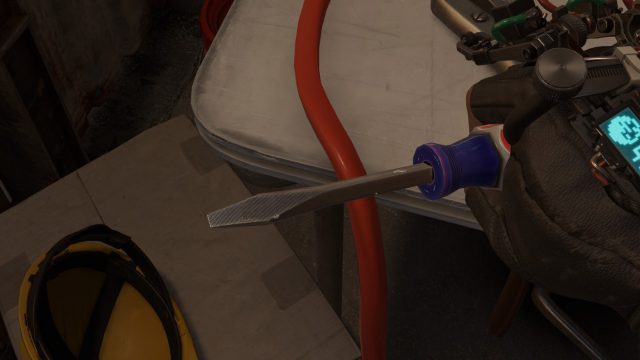
The clarity of the Aero is so crisp that it easily reveals content that isn’t up to par; for the first time in Alyx I immediately noticed that the game’s chain-link fences are actually completely flat, largely thanks to the headset’s increased resolving power which enhances stereoscopy (or lack thereof).
This also has an impact on presence—that feeling when your eyes are being tricked into believing that what’s in front of you is actually there. While playing Alyx with Aero, there were several rooms I walked into where I just had to stop and stare… when the lighting was just right, it felt like I was actually standing there in that place. It’s an incredibly powerful feeling that goes beyond mere immersion, and Aero seems to elicit it more easily than any headset I’ve tried before.
Beyond virtually eliminating ghosting and glare, Aero’s lenses also make for an incredibly large sweet-spot which means that most of the image stays sharp even when you rotate your eyes away from the center. This is an absolute relief from most other Fresnel headsets which have tight sweet-spots that make things look blurry even if you move your eyes just a bit.
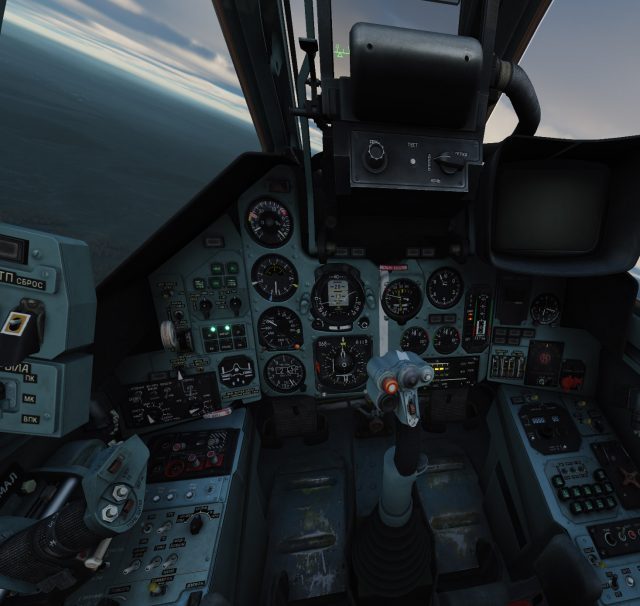
While Aero has incredible clarity, it’s image isn’t without flaws; there’s two things preventing it from looking like a near-perfect image. The first is chromatic aberration (the separation of colors), which stood out to me right away, even before explicitly analyzing the headset’s image quality.
This is surprising because chromatic aberration is rarely an issue on other VR headsets as it’s easily corrected in software. Varjo is either doing a poor job with their chromatic aberration correction, or there’s something about the lenses that make it a greater challenge than with other headsets. Hopefully the former, which would mean that it could potentially be solved with a future software update.
The other issue with Aero’s image is distortion at the extreme edges of the field-of-view. It’s subtle enough that if you aren’t moving your head you won’t notice it, but as soon as you start moving you’ll notice it due to the sensitivity of peripheral vision to ‘motion’. Other headsets also correct for distortions in software, and with Aero, most of the image is distortion free; given that it’s just on the edges, I’m less hopeful that this could be fixed with a software update.
The distortion doesn’t feel like a deal-breaker, but it’s a bummer that it detracts from what would otherwise be a nearly pristine view.
Overall: Here’s the thing about Aero. It’s clarity and resolving power is beyond the fidelity of most VR content to date. There’s less than a dozen VR titles in existence with the visual chops to really make use of Aero’s fidelity. Upgrading to Aero from any recent generation VR headset isn’t going to mean much if you’re playing Beat Saber, VRChat, or most indie VR titles; they simply weren’t authored with the necessary level of detail. But if you’re using a handful of applications where resolving power is crucial (like flight sims), Aero’s visuals will delight.
Field-of-View
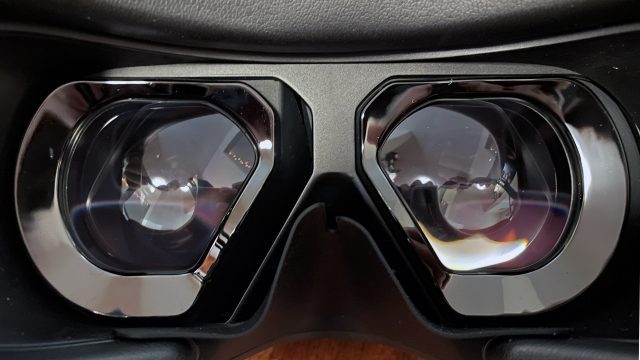
Varjo quotes Aero’s field-of-view at “115° horizontal, 134° diagonal at 12mm eye-relief,” though my personal measurements fell well short of this, even when removing the facepad to get my eyes as close as possible. Here’s how it stacks up to recent headsets:
Personal Measurements – 64mm IPD
(minimum-comfortable eye-relief, no glasses, measured with TestHMD 1.2)
| Varjo Aero | Vive Pro 2 | Reverb G2 | Valve Index | |
| Horizontal FOV | 84° | 102° | 82° | 106° |
| Vertical FOV | 65° | 78° | 78° | 106° |
Personal Measurements – 64mm IPD
(absolute minimum eye-relief; facepads removed, no glasses, measured with TestHMD 1.2)
| Varjo Aero | Vive Pro 2 | Reverb G2 | Valve Index | |
| Horizontal FOV | 102° | 116° | 98° | 108° |
| Vertical FOV | 77° | 96° | 88° | 106° |
For such an expensive headset, the lack of eye-relief adjustment to maximize the field-of-view is a shame.
Even though the field-of-view is generally less than these other headsets, the large sweet-spot goes a long way toward making it feel larger than it is.
Similar to Vive Pro 2, the actual shape of the field-of-view doesn’t feel quite as round as some other headsets. Instead it feels slightly cropped vertically, a bit more at the bottom than the top.
IPD & Eye-tracking
Varjo Aero includes the company’s 200Hz eye-tracking solution which is paired with an automatic motor-driven physical IPD adjustment that ranges from 57–73mm.
When you put on the headset you’ll be asked to stare at a white dot at the center of the screen for a few seconds to calibrate both the eye-tracking system and your IPD. If the IPD needs to be adjusted, you’ll hear the headset make a little whirr sound as the lenses slide quickly and easily into position.
You can see a readout of the measurement through the Varjo software (mine was spot on), and you can even manually set the IPD if you’d like, in 0.5mm increments.
The eye-tracking system in Aero can also be used for foveated rendering to increase rendering performance, but it’s only supported in applications that make use of the Varjo SDK (which are few and far between).
With Aero likely to reach a wider audience than the company’s more expensive headsets, it’s possible we’ll start to see more applications adapted to support the Varjo eye-tracking system—the company claims it’s fairly straightforward for developers using Unity or Unreal Engine.
In my limited testing with foveated rendering in Aero, I found it to be effectively invisible; the only time I could notice that it was even active is if the eye-tracking wasn’t calibrated correctly.

